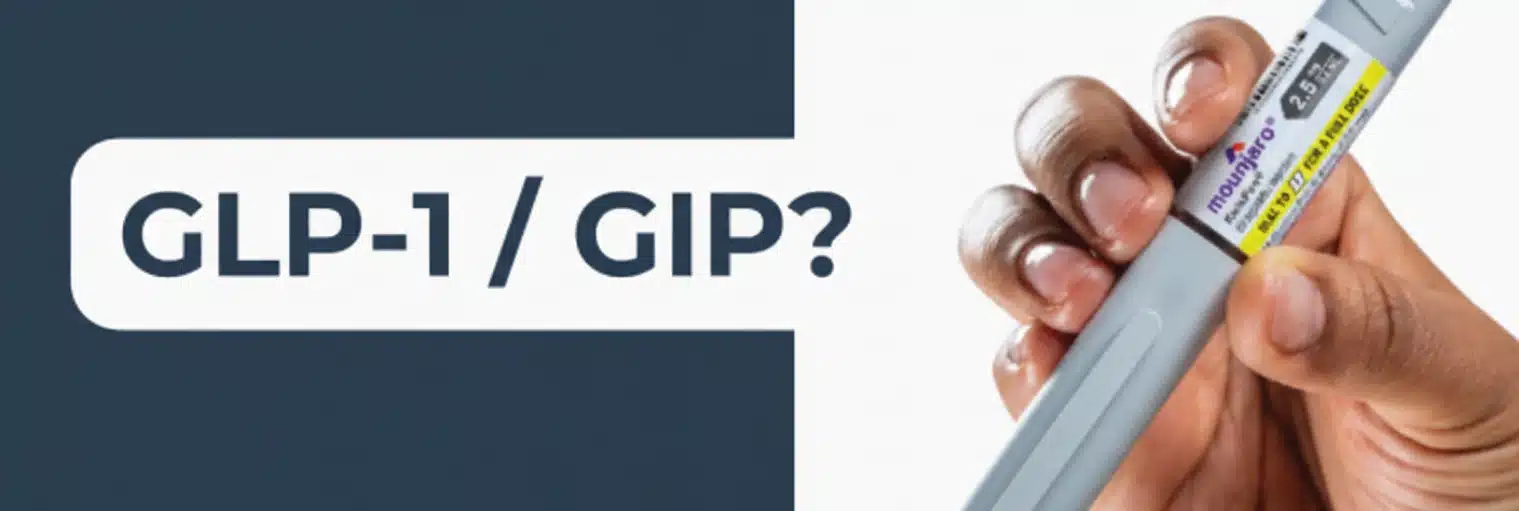Takeaways
- RJVA-002 uses gene therapy to deliver GLP-1 and GIP directly from pancreatic beta cells in a nutrient-responsive way.
- Preclinical studies in obese mice show up to 30% body weight loss and improved glucose control from a single dose.
- The therapy remains in preclinical development, with major questions ahead about human safety, durability, and scalability.
A New Chapter in Obesity Care
Obesity management has entered an era defined by potent pharmacologic therapies and groundbreaking metabolic research. Weekly injections of GLP-1 agonists such as semaglutide and tirzepatide have delivered life-changing results for many. Yet, these treatments come with persistent burdens: frequent dosing, high cost, gastrointestinal side effects, and significant drop-off in adherence over time. These limitations have driven interest toward novel approaches that mimic the benefits of incretin therapy without relying on chronic drug delivery. Among these, single-shot gene therapy stands out for its potential to reprogram the body to regulate weight from within. RJVA-002, an investigational therapy using a targeted viral vector, aims to create a sustainable, nutrient-responsive incretin supply directly from pancreatic beta cells. It could shift the treatment paradigm from weekly effort to one-time biological reset.
What Is RJVA-002?
The Rejuva Platform Explained
RJVA-002 is part of a broader innovation pipeline known as the Rejuva platform. This therapeutic strategy centers around gene therapy vectors that instruct pancreatic cells to produce specific metabolic hormones. Unlike liver-directed or systemic gene therapies, Rejuva targets the pancreas directly. By using an engineered promoter derived from the human insulin gene, the therapy ensures that only insulin-producing beta cells express the desired proteins. RJVA-002, in particular, encodes two potent incretin hormones: GLP-1 and GIP. These are among the same biological agents that underlie the success of injectable drugs like Wegovy, but delivered in a smarter and longer-lasting way.
Dual Incretin Strategy: GIP + GLP-1
The combination of GIP and GLP-1 represents a purposeful design choice. While GLP-1 lowers blood glucose, slows gastric emptying, and suppresses appetite, GIP offers additional insulinotropic effects and enhances the overall metabolic response. Their synergy became evident in the development of dual-agonist drugs, which outperformed single-hormone therapies in clinical trials. Human studies published in Diabetes Care confirmed that combined agonists achieved greater metabolic impact than GLP-1 alone. RJVA-002 takes this approach a step further by engineering pancreatic cells to release these hormones in response to nutrient intake. This dynamic hormone release mimics natural physiology far more closely than continuous drug exposure, potentially reducing side effects and enhancing safety.
Inside the Science: How RJVA-002 Works
Targeted AAV Delivery to Pancreatic β-Cells
The core of RJVA-002’s mechanism relies on an adeno-associated virus (AAV) that serves as a genetic delivery vehicle. The AAV is introduced via endoscopic ultrasound (EUS) guidance, a minimally invasive method that allows for precise placement in the pancreas’s splenic lobe. This enables high vector localization and minimizes systemic exposure. Once inside the beta cells, the AAV delivers a DNA cassette encoding the GLP-1 and GIP transgenes. The targeted nature of this delivery method lowers the risk of off-target expression, making the approach potentially safer than systemic gene therapies often used for rare diseases.
Nutrient-Responsive Expression via Insulin Promoter
One of RJVA-002’s defining features is its promoter: a regulatory element modeled on the native human insulin promoter. This design ensures that expression of the GLP-1 and GIP genes only occurs in beta cells and only in response to glucose or other nutrients. This built-in “smart switch” prevents hormone overproduction during fasting or non-metabolic states. As a result, the therapy does not flood the system with incretins continuously. Instead, it provides a rhythmic, meal-responsive release that closely mirrors natural hormonal dynamics. This could help preserve appetite regulation, reduce nausea, and support healthier metabolic adaptation over time.
Preclinical Findings: What Animal Models Reveal
Weight Loss Outcomes in Obese Mice
Initial studies in mice engineered to express human-like GIP receptors have shown compelling results. A single administration of RJVA-002 induced significant, dose-dependent weight loss in diet-induced obesity models. In high-dose groups, mice lost nearly 30% of their body weight over five weeks (Metabolism). Those in the mid-dose cohort dropped approximately 18%. Importantly, the weight loss trajectories showed no sign of plateauing within the observation window. This suggests the therapeutic effect remains active and continues to exert metabolic influence beyond initial intervention.
Blood Glucose and Insulin Sensitivity
Beyond weight reduction, RJVA-002 influenced glucose metabolism in meaningful ways. Mice treated with the therapy displayed substantially improved glycemic profiles. Blood glucose levels dropped by up to 38% within three weeks, consistent with similar results from GLP-1 gene therapy studies in rodents. Insulin sensitivity improved without signs of hypoglycemia in lean or healthy animals. This safety margin is critical, as it indicates that the therapy adjusts output based on physiologic need rather than operating on a fixed dosing schedule. The nutrient-sensitive promoter appears to be doing its job effectively, releasing incretins only when appropriate, while protecting against metabolic overload.
Duration of Effect and Plateau Questions
While short-term outcomes look promising, longer-term data remain limited. The five-to-six-week duration of preclinical trials does not yet reveal whether the weight loss eventually plateaus or rebounds. Nor does it clarify whether transgene expression persists over months or becomes silenced by epigenetic factors or immune clearance. These questions will need to be addressed in larger animal models and ultimately in humans. Until then, the durability of RJVA-002’s effects remains a hopeful hypothesis, not a proven conclusion.
Safety Signals and Early Risk Indicators
Organ Toxicity and Off-Target Expression
No major safety issues emerged in preclinical toxicity studies. Vector DNA remained largely restricted to the pancreas, with minimal detection in liver tissue or other off-target organs. Histopathologic reviews revealed no tissue damage, inflammation, or abnormal cell morphology in key systems. These findings support the hypothesis that RJVA-002’s design successfully minimizes systemic exposure and related risks, echoing findings from islet-targeted vector studies.
Immunogenicity and AAV Neutralization Risk
As with any AAV-based therapy, immune reactions remain a central concern. The human immune system may recognize the viral vector as foreign and mount a neutralizing response, potentially reducing efficacy or limiting retreatment. Pre-existing antibodies could block the vector entirely, particularly in adults previously exposed to wild-type AAV strains. While animal studies did not report significant immune activation, translation to humans may introduce new challenges. Developers will likely need to pre-screen for immunity or consider vector engineering strategies to reduce immune detection.
Islet Integrity and Autoimmune Risk
Pancreatic beta cells are delicate and already play a central role in diabetes pathology. Any intervention that modifies their function must avoid triggering autoimmune destruction or cellular stress. Though RJVA-002 was well tolerated in mice and pigs, there remains a theoretical risk of autoimmunity or beta-cell exhaustion over time. Longitudinal studies will be necessary to determine whether endogenous incretin expression alters islet homeostasis or immune recognition in humans.
Clinical Translation: Barriers and Next Steps
Regulatory Challenges for First-in-Human Use
To progress toward clinical trials, RJVA-002 must meet rigorous regulatory requirements. Developers must provide validated assays for vector purity, transgene activity, tissue specificity, and toxicology. In addition, regulators will expect real-world feasibility data regarding delivery methods, patient selection, and adverse event mitigation. Since the therapy modifies endocrine cells in a vital organ, agencies will likely require long-term follow-up and robust preclinical replication.
Delivery at Scale: From Pig Models to Patients
Fractyl’s successful pig model studies offer a potential roadmap for human translation. Using endoscopic ultrasound, clinicians injected vectors into specific pancreatic lobes without damaging surrounding structures. This approach may prove practical in advanced endoscopy centers but will require new training protocols for widespread adoption. Questions remain about variability in delivery accuracy, dosing consistency, and patient tolerance. For obesity care to shift toward gene therapy, these technical barriers must first be resolved.
Below is a comparative table of 5 critical translational factors in AAV gene therapy — their relevance, risks, and mitigation strategies. It adds clarity to challenges not yet deeply explored above.
| Translational Factor | Challenge / Risk | Evidence or Example | Potential Mitigation |
|---|---|---|---|
| Immune response (capsid / pre-existing antibodies) | Neutralization, inflammation, loss of transgene expression | PMC: Humoral response to AAV capsids | Screen for antibodies; use low-immunogenic capsids; immunosuppression |
| Vector biodistribution and off-target expression | Expression in non-target tissues, toxicity risk | OJRD: AAV vector targeting studies | Cell-specific promoters, delivery optimization, dose refinement |
| Transgene silencing / epigenetic suppression | Loss of therapeutic effect over time | AAV promoter methylation reported in multiple rodent studies | Use of insulators, CpG-free vectors, enhancer tuning |
| Retreatment feasibility / immunity on repeat dosing | Immune memory blocks vector re-administration | Frontiers: AAV retreatment barrier | Vector switching; immune modulation; long-interval planning |
Durability, Reversibility, and Retreatment
One of the biggest unknowns involves durability. How long does the transgene remain active? Can the therapy be reversed if needed? What options exist if metabolic needs change? AAV vectors generally integrate episomally and can persist for years, but gene silencing or immune attack may erode efficacy over time. Retreatment is complicated by anti-AAV immunity. Unlike GLP-1 injections, this is not an adjustable therapy—that trade-off between convenience and flexibility must be carefully evaluated.
3 Practical Tips
1. Monitor the gene therapy landscape beyond rare diseases. Obesity and diabetes are emerging frontiers where innovation is accelerating rapidly.
2. Stay updated on dual incretin biology. GLP-1 and GIP work synergistically, but their long-term interplay remains under active investigation.
3. Evaluate the care infrastructure needed for complex delivery methods like EUS-guided pancreas injection. Therapeutic potential depends on more than molecule design.
FAQ: What People Are Asking
Is RJVA-002 available for use in humans yet?
No, RJVA-002 remains in preclinical development. While the company has reported promising results in mice and pigs, no human trials have begun. Regulatory approval for first-in-human studies is still pending.
How does RJVA-002 differ from weekly GLP-1 injections like Wegovy?
RJVA-002 uses gene therapy to enable the body to produce GLP-1 and GIP from within the pancreas. Unlike Wegovy, which involves weekly injections, RJVA-002 may require only a single administration. It aims to produce hormone release in response to meals, not continuously.
What are the long-term risks of pancreatic gene therapy?
Long-term risks could include immune responses, transgene silencing, or unintended changes to beta cell function. Autoimmune reactions are a theoretical concern. These risks must be assessed over extended observation in clinical trials.
Could this treatment replace bariatric surgery in the future?
Gene therapy like RJVA-002 may offer an alternative for certain patients, but it’s not a direct replacement for surgery. It must demonstrate equivalent or superior durability, safety, and efficacy before earning that role in clinical care.
Broader Implications for Metabolic Medicine
The technology behind RJVA-002 extends beyond weight loss. Endogenous incretin production could support better glucose regulation in type 2 diabetes, particularly for patients resistant to current drugs. Researchers may explore its application in non-alcoholic fatty liver disease or cardiovascular risk modulation. The ability to rewire hormonal response from within the pancreas marks a shift from treatment to transformation. It reframes metabolic dysfunction as something potentially correctable, not merely manageable. Our team at Fountain of Youth stays on top of these developments so that our clients always have access to science-backed rejuvenation and healing strategies.
Where the Field Goes Next
In the coming year, attention will turn to whether RJVA-002 enters Phase I trials. Watch for formal clinical trial announcements, safety assessments, and updates from the American Society of Gene and Cell Therapy. Competitors may introduce similar approaches targeting other tissues or using mRNA instead of AAV. These innovations could further personalize obesity care. As science brings us closer to one-shot interventions, the concept of “resetting” metabolism becomes more than aspirational.
Questions? We’re here to help. Give us a call at 239-355-3294 and get guidance on emerging treatments that matter.
Medical review: Reviewed by Dr. Keith Lafferty MD, Medical Director at Fountain of Youth SWFL on November 1, 2025. Fact-checked against government and academic sources; see in-text citations. This page follows our Medical Review & Sourcing Policy and undergoes updates at least every six months. Last updated November 1, 2025.




